It is a truth that if we do not remember nor teach our history, we are bound to repeat it. The Nazi Holocaust was the most evil event in human history, and it began on November 9, 1938, on a night known as Kristallnacht or the “Night of Broken Glass.”
Eight-five years ago, the German police and authorities stood by and even encouraged the Nazis as they destroyed close to 300 synagogues, burned over 7,000 Jewish businesses, arrested over 30,000 Jews who ended up in camps, and murdered at least 91 Jews (some historians say as many as 600). It is considered the beginning of the Holocaust, and never in the last 85 years has it been so important to remember it because we are closer to repeating it, God forbid, than ever before in our lifetimes.
Kristallnacht did not happen in a vacuum, and the circumstances leading up to it are eerily and frighteningly similar in tone and preparation to what we are seeing today. Since his election five years prior, Hitler had been strategizing with Goebbels to prepare for a situation where they could use a single event to justify coming after the Jews. They had successfully already used the death of Horst Wessel in 1930 to propel the Nazis into power, and were experienced at using a single spark to create a flame for their own grab of power. By 1938, they were ready for any action by one Jew that they could use to attack all Jews. With the murder on November 9 of Nazi diplomat Ernst Vom Rath, at the hands of a Jew who was tired of being persecuted by Hitler’s anti-Semitic laws, they had their spark. Kristallnacht was called for, and the Holocaust began.
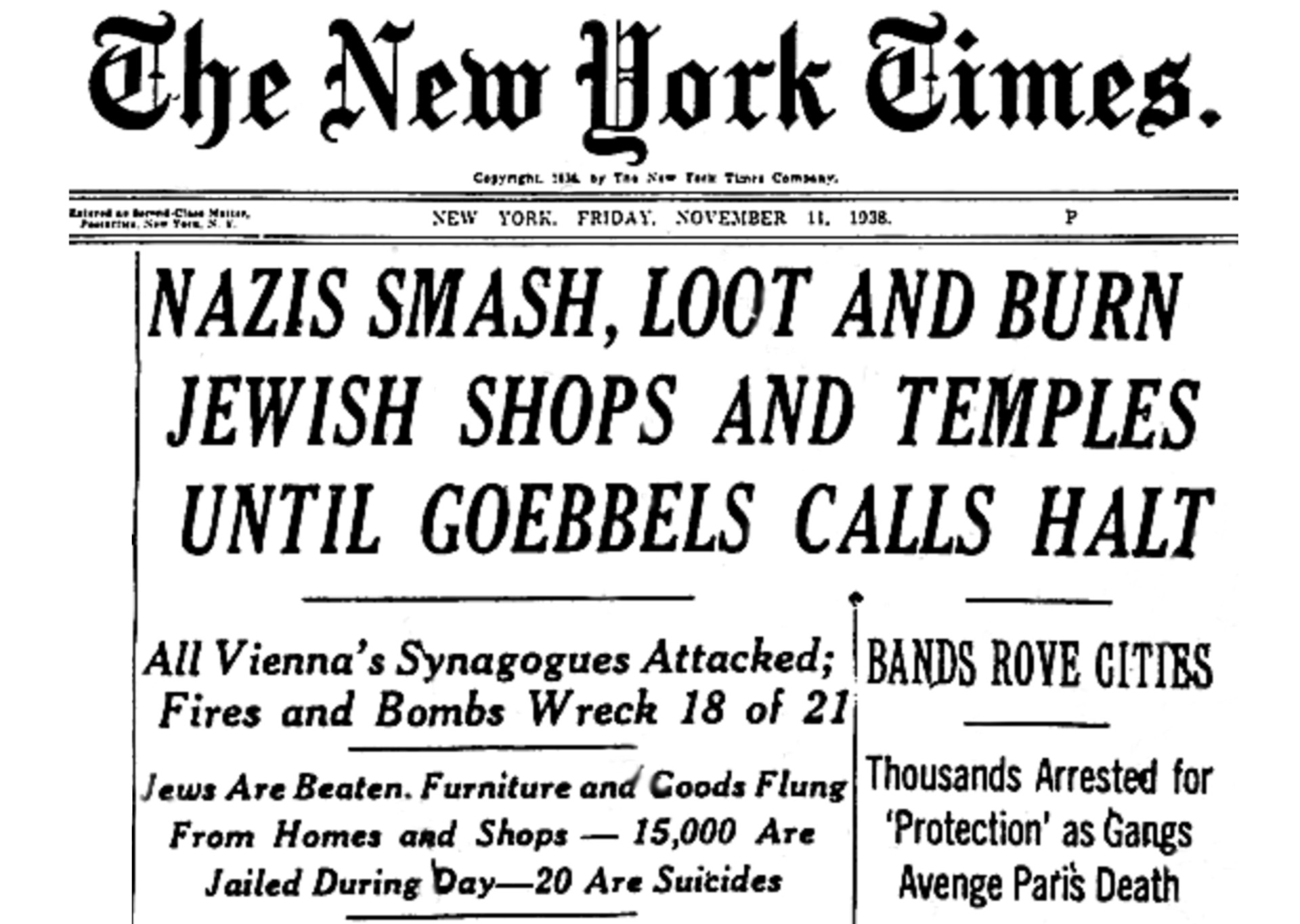
The headline for the New York Times on November 11, 1938, after the anti-Jewish pogrom known as Kristallnacht, (Universal Images Group via Getty Images)
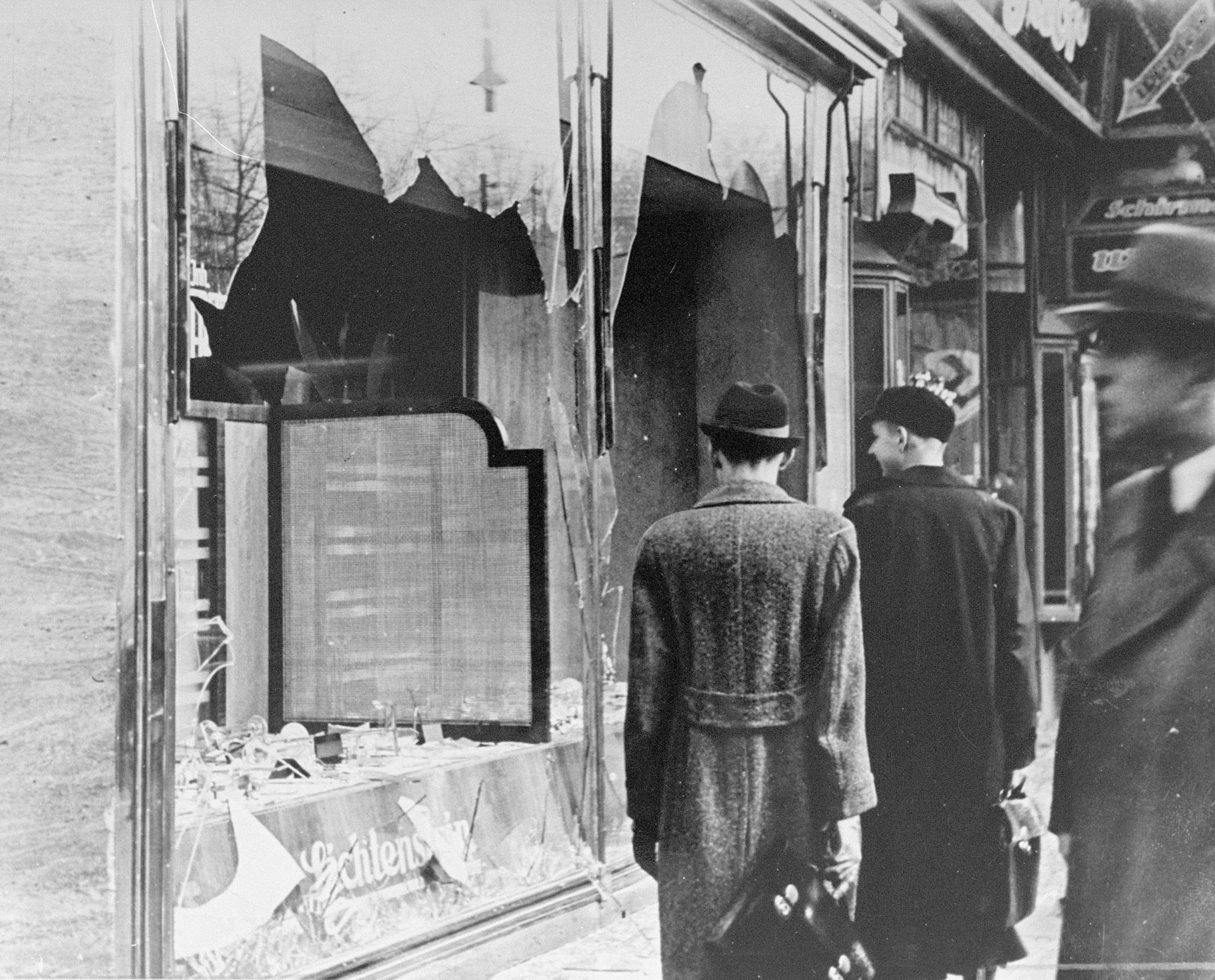
Germans pass by the smashed windows of a Jewish-owned shop in the aftermath of Kristallnacht on November 9-10, 1938. (Universal History Archive/Getty Images)
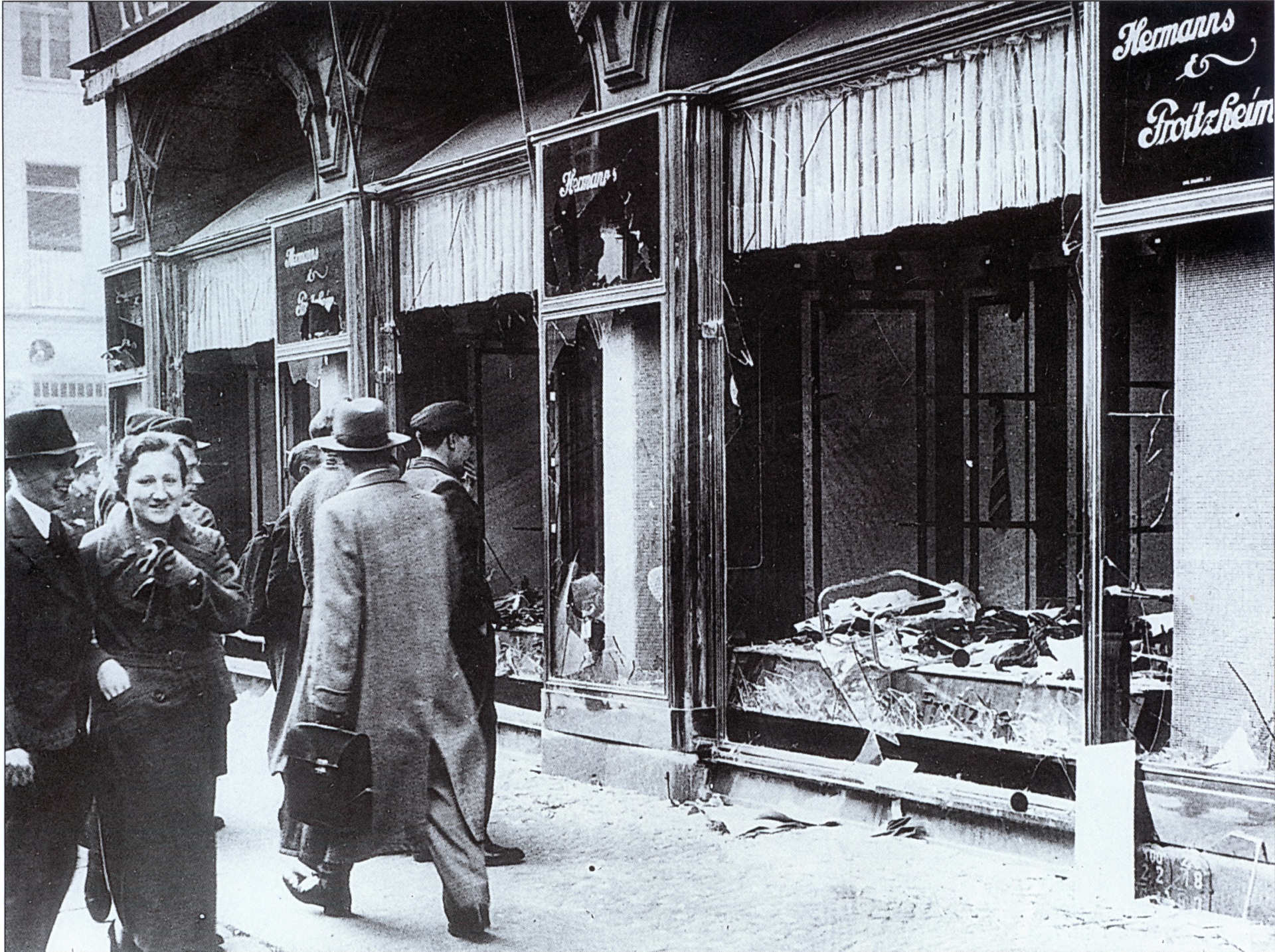
Pedestrians glance at the broken windows of a Jewish owned shop in Berlin after the attacks of Kristallnacht in November 1938. (Universal History Archive/Getty Images)

A Jewish-owned shop in Berlin is shown with Nazi antisemitic graffiti in 1938. (PIGISTE/FRANCE PRESSE VOIR/AFP via Getty Images)

A Jewish-owned shop is vandalized by Nazis with a poster reading “Germans Defend Yourselves – Don’t Buy from Jews” in 1938. (History/Universal Images Group via Getty Images)

A Jewish-owned shop in Berlin is seen after being vandalized by Nazis and covered with antisemitic graffiti, 1938. (History/Universal Images Group via Getty Images)
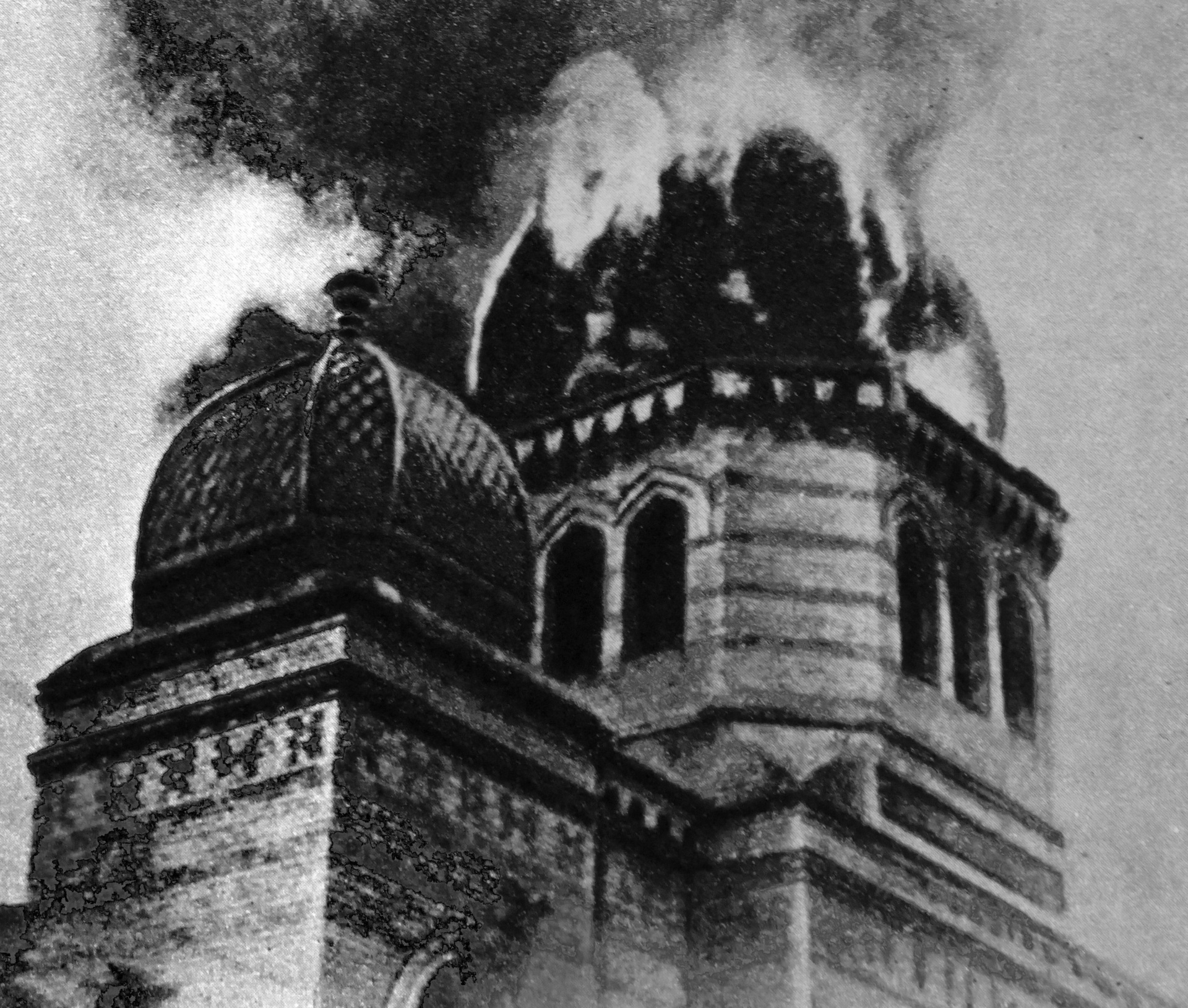
The Eberswalde synagogue in Berlin, Germany, is destroyed during the anti-Semitic attacks of Kristallnacht, on November 9-10, 1938. (Universal History Archive/Universal Images Group via Getty Images)

The Boerneplatz synagogue is in flames during Kristallnacht in Frankfurt, Germany, on November 10, 1938. (History/Universal Images Group via Getty Images)
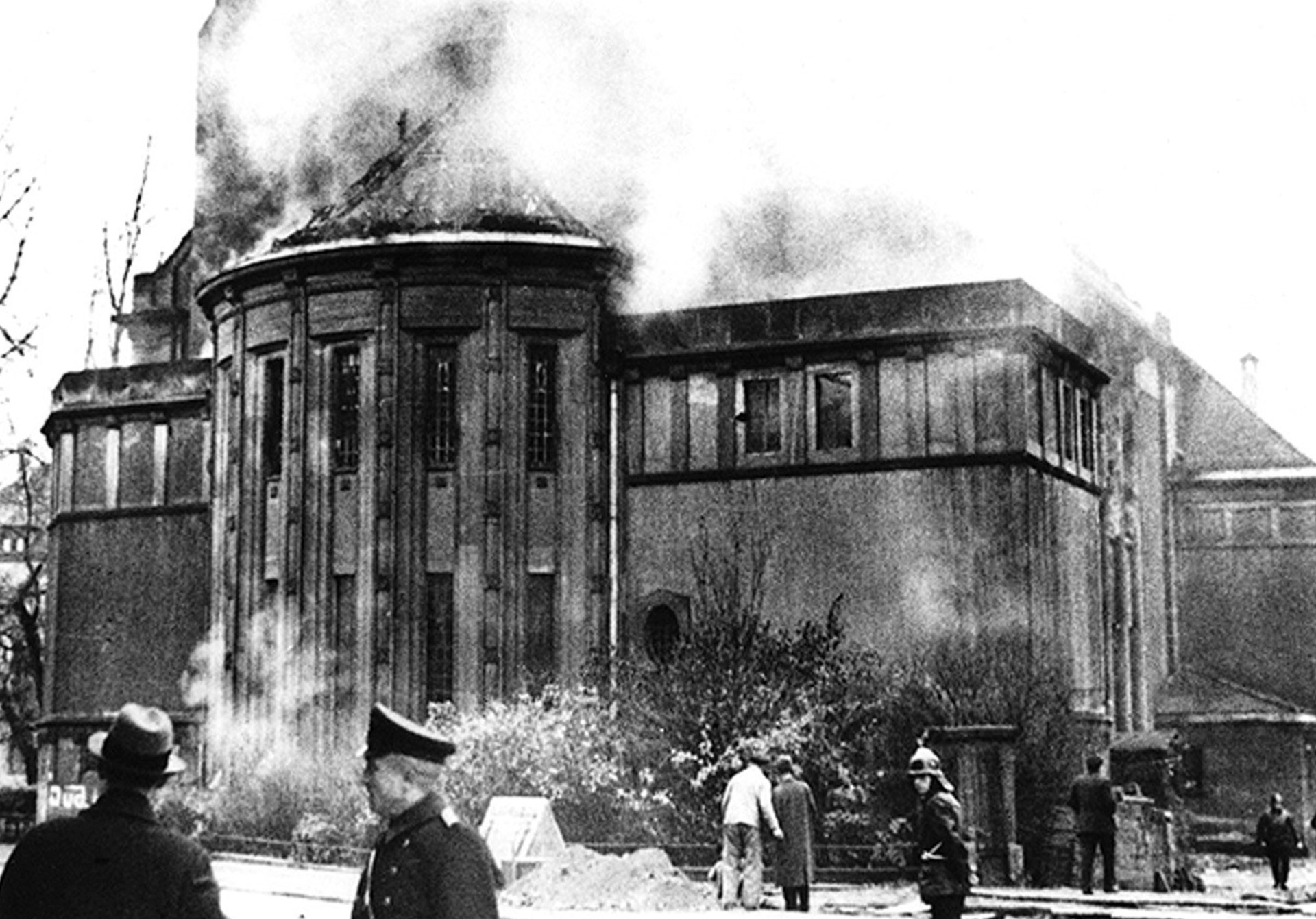
The synagogue in Bamberg, Germany, was one of more than 1,000 synagogues destroyed during Kristallnacht on the night of Nov. 9-10, 1938. (History/Universal Images Group via Getty Images)
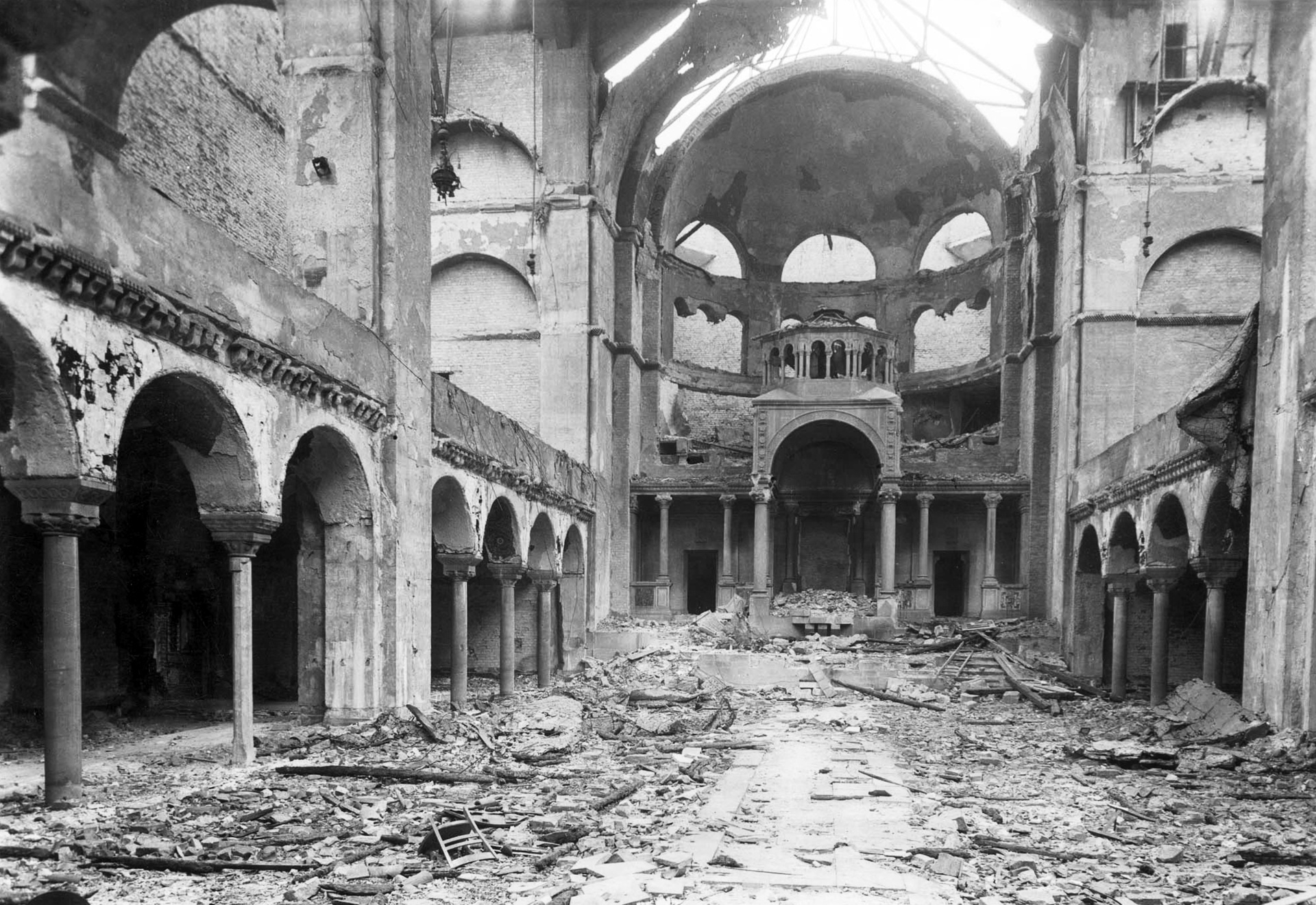
The interior of Berlin’s Fasanenstrasse synagogue, opened in 1912, is seen after it was set on fire during Kristallnacht on November 9, 1938. (History/Universal Images Group via Getty Images)
The circumstances are too similar to today to be avoided; and it is easiest to see the whole Nazi arc by looking at their first success at manipulation. Wessel was a Nazi, a thug, gangster, and a pimp. He was beaten to death by German Communists, and then made into a martyr by Goebbels and Hitler, who used his death as a rallying cry to their cause. The success of Wessel for the Nazi party was used as the model for George Floyd’s death popularizing BLM. Like Wessel before him, Floyd’s death was used so well that people supported BLM despite the reality that their charter has always called for the destruction of both Israel and the United States. With BLM’s ascension to power, like the Nazis before them, the stage was set for a grasp for power through what many of us would call domestic terrorism.
And now we see the same playbook being used through blaming Israel for the evils of Hamas and calling for what is essentially the death of Israel and Jews: for defining Palestine as “the river to the sea” by definition means the destruction of Israel. Like Wessel and Floyd, an excuse is being created with the goal of another Kristallnacht. The hate-mongers who support Hamas are waiting for a spark that they can use to reenact the horrors of Kristallnacht, and God forbid, October 7.
Kristallnacht is a cautionary tale, and one we must learn from. But our remembrance of that night points to some of what is at the heart of this war going on in Israel.
One of the largest philosophical differences between Israel and Gaza is how we look at the world. Gazans look toward the past and want to repeat it, no matter how painful. They export hate and death. They took Gaza, which was beautiful prior to 2005, and made it desolate. They destroyed fruit orchards to build weapons, and took some of the most beautiful land in the world and made it an abyss of death.
Jews look to the past so that we can have a better future. We remember Kristallnacht so that it is never repeated. Israel exports not hate, but hope. Israel took a desert and made it flower with agriculture; developed some of the greatest inventions in the history of mankind; and renews and revitalizes life.

A person stands in front of the engraved name of his grandfather at the Shoah Wall of Names Memorial in Vienna, Austria, on the anniversary of Kristallnacht on November 9, 2021. (AP Photo/Lisa Leutner)
And that is what needs to be remembered. Israel worships life, while her enemies worship death. We export hope in a better future, while they seek the violence and devastation of the Dark Ages.
May we all remember this 85th anniversary of the Holocaust so that it never happens again, and may we all choose to look forward to a future of peace rather than hate.
Rabbi Michael Barclay is the Spiritual Leader of Temple Ner Simcha (www.NerSimcha.org) and the author of Sacred Relationships: Biblical Wisdom for Deepening Our Lives Together. Follow him on X at @Rabbi_Barclay.
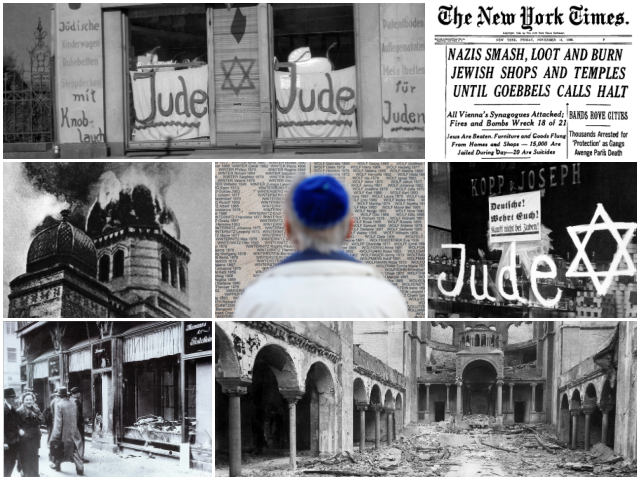
COMMENTS
Please let us know if you're having issues with commenting.